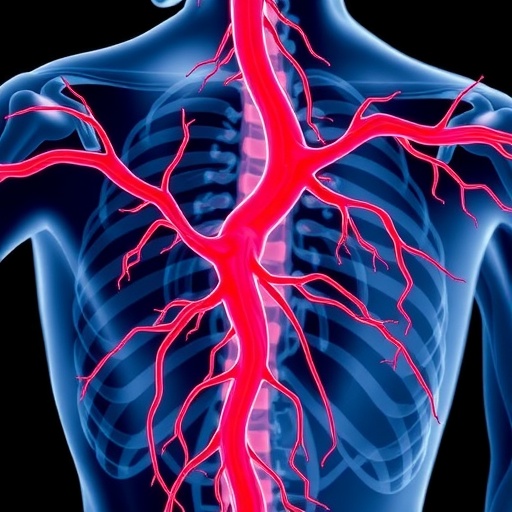In a groundbreaking study poised to reshape our understanding of fetal development and sex determination, researchers have revealed a critical link between maternal iron metabolism and the genetic regulation governing male sex determination in mammals. This discovery uncovers how iron availability during embryonic growth directs epigenetic modifications that are essential for the proper activation of the Y-chromosome gene responsible for male sexual differentiation.
Central to this investigation is the role of ferrous iron (Fe²⁺), a vital cofactor in numerous oxidoreductase enzymes, particularly those involved in histone demethylation processes. Histone demethylation modulates chromatin structure, thereby regulating gene expression patterns necessary for normal cellular differentiation. The researchers focused specifically on KDM3A, a histone demethylase enzyme that removes methyl groups from histone H3 lysine 9 (H3K9), a modification known to silence gene expression. This demethylation is crucial for the activation of the gene Sry, the sex-determining region on the Y chromosome, instrumental in initiating male gonadal development.
Previous studies established Sry as the master regulator of male sex determination, directing bipotential gonads toward testis formation in mammalian embryos. However, what remained elusive was the influence of metabolic factors, like iron, on the epigenetic landscape mediating Sry expression. The team embarked on a detailed exploration of iron metabolism pathways during the critical window of mouse embryonic sex determination. They discovered that mechanisms generating and incorporating ferrous iron are markedly upregulated in embryonic XY gonads precisely at the time when sex fate is decided.
.adsslot_FeruYqR5VB{ width:728px !important; height:90px !important; }
@media (max-width:1199px) { .adsslot_FeruYqR5VB{ width:468px !important; height:60px !important; } }
@media (max-width:767px) { .adsslot_FeruYqR5VB{ width:320px !important; height:50px !important; } }
ADVERTISEMENT
Culturing embryonic XY gonads with iron chelators—agents that bind and sequester iron ions—strikingly impaired KDM3A-dependent H3K9 demethylation at the Sry locus. This epigenetic block suppressed Sry transcription, effectively halting the molecular signals that promote testis development. Instead, the gonads began expressing markers typical of ovarian tissue, indicating an unexpected reprogramming toward female differentiation. This finding emphasized that iron is not merely a metabolic micronutrient but a pivotal determinant in epigenetic modulation during sex determination.
Expanding their investigation to in vivo models, the researchers genetically disrupted Tfrc, the gene encoding transferrin receptor 1, a protein indispensable for cellular iron uptake. Conditional deletion of Tfrc specifically in somatic cells of the fetal XY gonad yielded partial male-to-female sex reversal phenotypes in offspring. This phenotypic shift underscored the necessity of iron import at a cellular level to maintain normal testis development, further cementing the connection between iron metabolism and sex determination pathways.
In a complementary approach, transient pharmaceutical inhibition of iron availability in pregnant mice similarly induced sex reversal in a subset of male embryos. These experimental manipulations mirrored the genetic findings and demonstrated the sensitivity of the embryonic sex-determining cascade to maternal iron homeostasis, highlighting the environmental context’s influence on developmental fate decisions.
One of the most striking implications of this study hinges on maternal nutrition. The team examined the effects of sustained maternal iron deficiency by feeding pregnant mice a low-iron diet during gestation. When combined with a heterozygous loss-of-function mutation in Kdm3a—which normally does not affect sex determination—some male offspring exhibited suppressed Sry expression and underwent male-to-female sex reversal. This synergy between genetic predisposition and environmental nutrient availability spotlights a previously unappreciated risk factor for disorders of sexual development linked to maternal diet.
At the molecular level, their data suggest that ferrous iron acts as an indispensable cofactor for histone demethylases like KDM3A, directly influencing epigenetic remodeling at critical regulatory loci such as Sry. The biochemical dependency on iron means that fluctuations in iron supply during embryogenesis could have profound downstream effects on chromatin state and gene activation, fundamentally steering developmental trajectories.
This research not only advances the fundamental biology of sex determination but also raises considerations for maternal health and prenatal nutrition. Iron deficiency remains a prevalent condition worldwide, particularly among pregnant women, and these findings imply that insufficient maternal iron could potentially lead to aberrant sexual development in the fetus. The ramifications extend beyond reproductive biology, suggesting a broader impact of trace mineral metabolism on epigenetic reprogramming during early life.
Moreover, these insights pave the way for potential clinical interventions. Monitoring and ensuring adequate iron levels in expectant mothers might serve as a preventative strategy against certain cases of disorders of sex development (DSDs). Meanwhile, the study also opens new avenues for exploring how other micronutrients essential for epigenetic enzymes may similarly influence embryonic fate decisions.
Future directions prompted by this work include elucidating the detailed biochemical mechanisms by which iron coordinates with histone demethylases in vivo, as well as determining whether similar pathways operate in human fetal development. Such translational research could ultimately inform guidelines for maternal nutrition and enhance the diagnosis and management of DSDs.
In summary, the revelation that maternal iron status intricately governs epigenetic regulation of the Y-chromosomal sex-determining gene offers a transformative perspective on the nexus between metabolism, gene regulation, and embryonic development. This discovery underscores the elegant complexity of biological sex determination and highlights how environmental and genetic factors converge to shape organismal fate.
Subject of Research:
The role of iron metabolism in regulating epigenetic histone modifications essential for male sex determination in mammalian embryos.
Article Title:
Maternal iron deficiency causes male-to-female sex reversal in mouse embryos
Article References:
Okashita, N., Maeda, R., Kuroki, S. et al. Maternal iron deficiency causes male-to-female sex reversal in mouse embryos.
Nature (2025). https://doi.org/10.1038/s41586-025-09063-2
Image Credits: AI Generated
Tags: epigenetic modifications in mammalsfetal development and sex determinationhistone demethylation and gene expressionimpact of iron on chromatin structureiron metabolism in embryonic growthKDM3A enzyme function in sex differentiationmaternal iron deficiencymaternal nutrition and fetal healthmetabolic factors influencing sex determinationrole of ferrous iron in gene regulationsex reversal in mammals due to nutrient deficiencySry gene activation and male gonadal development





